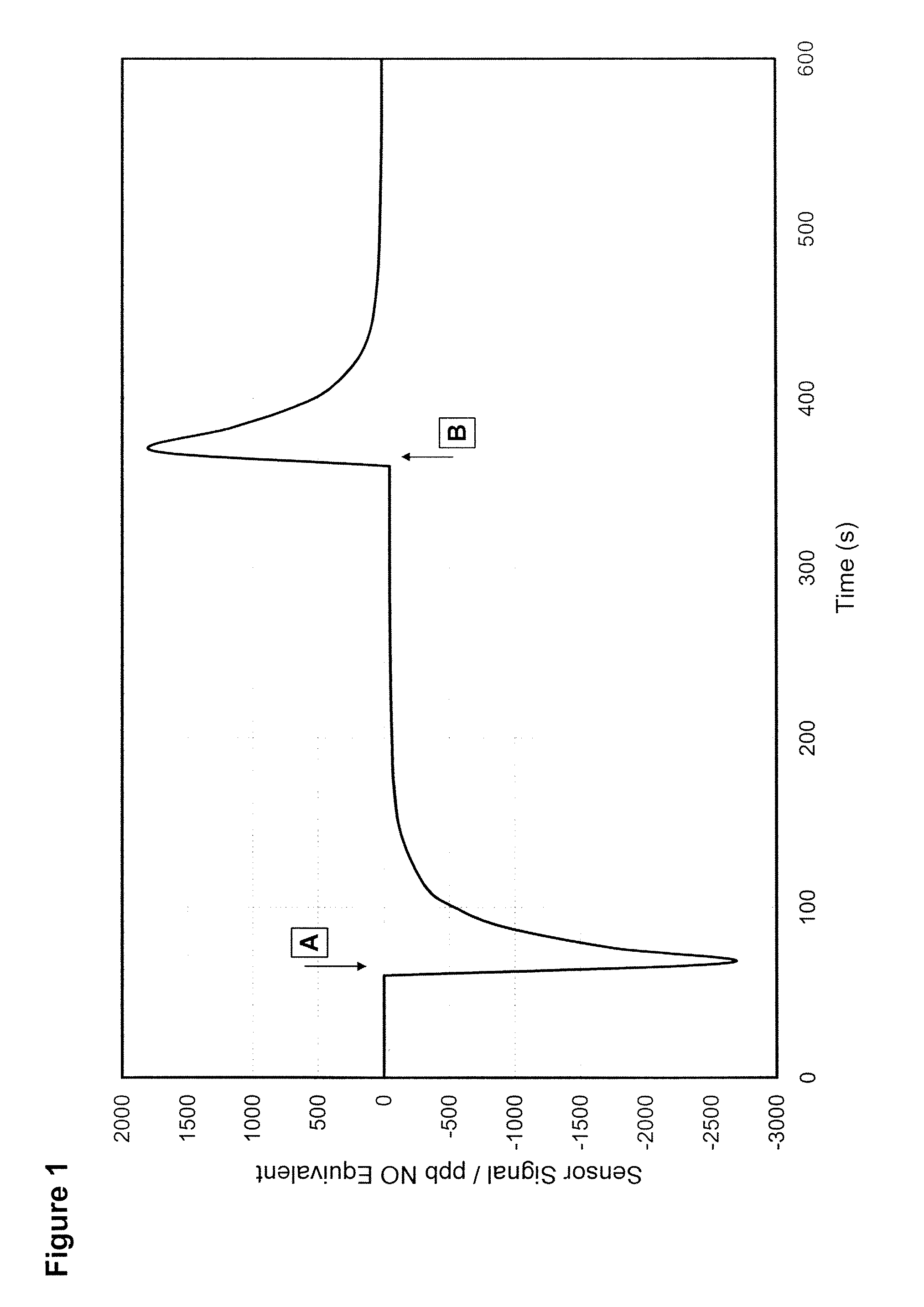Gas Sensor
a gas sensor and sensor technology, applied in the field of electrochemical gas sensors, can solve the problems of reducing reducing or completely canceling affecting the output of sensor components, so as to reduce or completely cancel the effect of interfering stimulus, simple robust solution, and reduce the effect of sensor outpu
- Summary
- Abstract
- Description
- Claims
- Application Information
AI Technical Summary
Benefits of technology
Problems solved by technology
Method used
Image
Examples
example
[0070]In the following, all references to % are to %Xo by weight unless indicated to the contrary.
[0071]32.3 g of Type 4 Synthetic Graphite (available from Johnson Matthey), having a surface area of 5 to 20 m2 / g and a median (D50) particle size (by volume) in the range 15 to 25 μm and 1.00 g of Ruthenium Black (99.9% metals basis, available from Alfa Aesar, Germany), were milled together in a Turbula T2F mixing machine (available from Willy A. Bachofen AG) for 20 minutes at a mixing speed of 100 cycles / min., to form an homogeneous mixture of the two catalyst materials. The resulting catalyst mixture contained 97 weight % graphite and 3 weight % ruthenium black.
[0072]A liquid mixture was obtained by mixing together in a beaker 0.080 ml of 35% ammonia solution, 21 ml PTFE dispersion (60% PTFE, 6% Triton-X dispersant, 34% water) and 12 g of 1% polyacrylic acid solution. The catalyst mixture was added in small amounts to the liquid mixture and mixed until the powder was wetted and an ho...
PUM
| Property | Measurement | Unit |
|---|---|---|
| RH | aaaaa | aaaaa |
| humidity | aaaaa | aaaaa |
| humidity | aaaaa | aaaaa |
Abstract
Description
Claims
Application Information
 Login to View More
Login to View More - R&D
- Intellectual Property
- Life Sciences
- Materials
- Tech Scout
- Unparalleled Data Quality
- Higher Quality Content
- 60% Fewer Hallucinations
Browse by: Latest US Patents, China's latest patents, Technical Efficacy Thesaurus, Application Domain, Technology Topic, Popular Technical Reports.
© 2025 PatSnap. All rights reserved.Legal|Privacy policy|Modern Slavery Act Transparency Statement|Sitemap|About US| Contact US: help@patsnap.com



